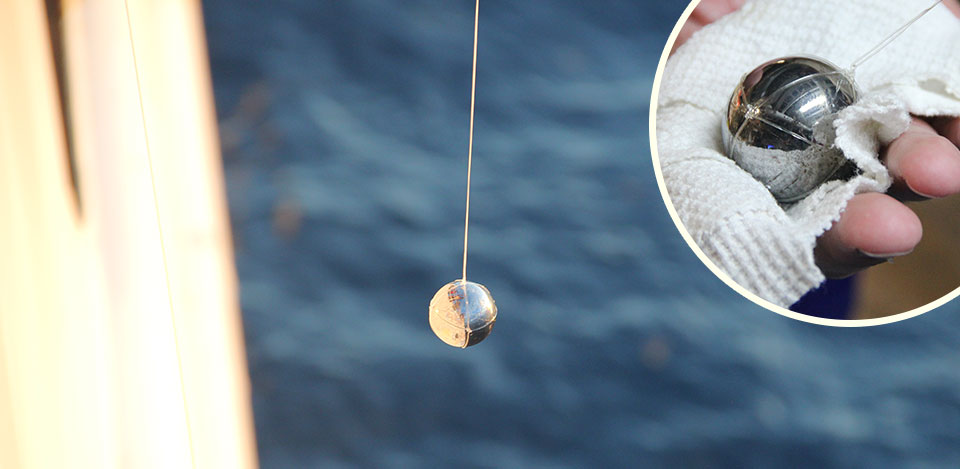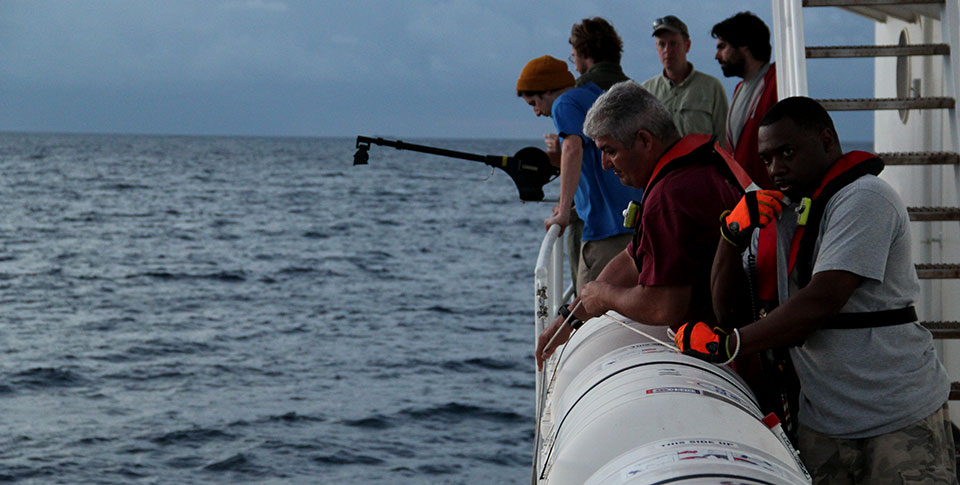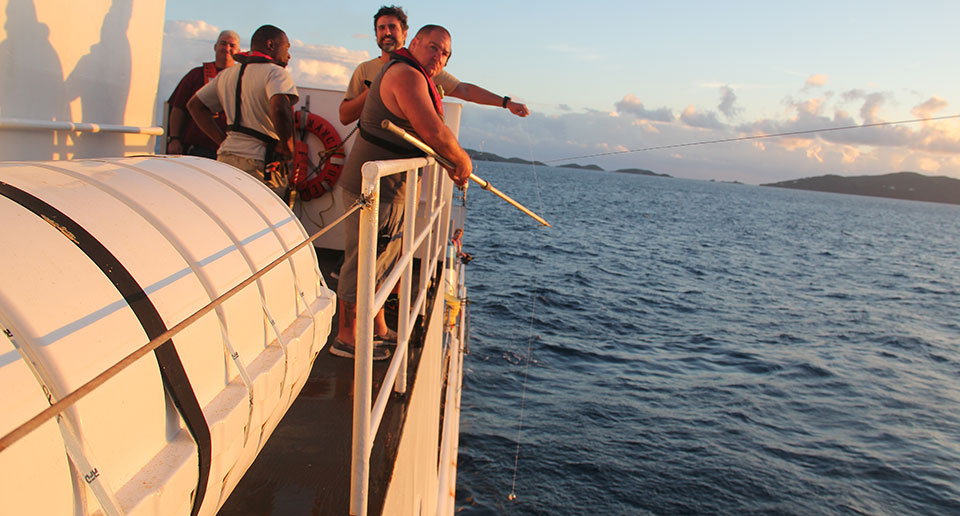#ScienceAtSea
Split Beam Calibration
At dawn on April 1, 2015, scientists and crew of the NOAA Ship Nancy Foster gathered together to take care of an especially tricky task: calibrating the split beam echosounder system. How this job gets done may surprise you. The task involves suspending a tiny tungsten ball directly underneath the split beam sonar mounted underneath the ship. How do you get the ball there? What do you do once you manage to get the ball down there? Why bother? Read on.

We're having a ball
This is no ordinary metal ball. It's a specialized tool used to calibrate a split beam echosounder system. The ball is special because its target strength (the strength of the returning echo from the sonar) is precisely known. Scientists place the ball under the ship's sonar, taking hundreds of sample readings. They then compare those readings with the known target strength value of the ball. If there are differences, the ship's sonar can be adjusted—calibrated—accordingly.
Where are fish located in the ocean? How many are there? How big are they? Resource managers and other decision makers need this information so they can make better decisions about how to conserve and manage fish populations and natural resources. One way that scientists gather this data is by using split beam echosounders—a sophisticated tool that uses reflected sound to estimate data such as fish size, direction of travel, and three-dimensional position in the water column. But how do scientists know if the split beam sonar system mounted underneath the ship is collecting accurate information? The answer: calibration.
This is where the metal tungsten ball comes into play. Scientists know precisely the size and density of this ball. If they place the ball under the sonar system and "ping" it, they can compare the results with the known values of the tungsten ball. That information is used to make small corrections to the sonar to ensure it is reading values such as size, position, and density as accurately as possible. Then, when the sonar is used to search for fish, the collected data can be relied upon as accurate.

But how do you get the ball under the ship?
Very carefully. Placing the ball underneath the ship (and underneath the split beam sonar) involves the coordinated effort of a large number of people maneuvering several lines tied to the ball. Here, Chief Bosun Greg Walker coordinates his movement via radio with a crewmember on the starboard side of the ship. Able Seaman Eloy Borges, behind Walker, guides a rope under the ship that is tied to a monofilament string attached to the tungsten ball. Phew! This team effort was well underway even before the sun came up.

OK, what's next?
Bosun Group Leader James Best (front) and scientist Chris Taylor prepare to lower the tungsten ball into the water while keeping the many lines connected to the ball untangled. Once the ball is in the water, people holding lines connected to the ball maneuver it underneath the vessel to the location of the acoustic sonar. This process may take hours.

Touchdown
While three people hold the tungsten ball underneath the ship, scientists inside monitor a computer screen to track where the ball is located within the four quadrants of the beam produced by the acoustic sonar's transducer. The goal is to collect at least 100 readings—shown as blue points in the inset image—which are recorded for each of the sonar's three transducers. Since the value, or target strength, returned by the tungsten ball is a known value, the scientists can then compare the values returned by the sonar and adjust accordingly. This insures that the number of fish that the sonar "sees" is as accurate as possible. The hand in this image is showing the location of the tungsten ball as viewed on the sonar's echogram.
While the day's calibration was a success, it was cut short. In science, as in life, things don't always go as planned. As this effort was nearing completion, the lines connected to the tungsten ball became entangled with an errant float line from a fishing trap passing beneath the ship. The lines snapped. Luckily, the crew managed to retrieve the (very expensive!) tungsten ball.